Poorly built giant breed dogs are being set up for a lifetime of injury, pain, weakness, and instability that shortens their lifespans and enjoyment of life. Flat Front and Cathedral Chest in Great Danes are a structural problem that is plaguing the breed.
A focus on correct build and movement are key elements of ethical and thoughtful Great Dane breeding programs.
Unfortunately, a large majority of people breeding Danes have minimized and even disregarded the importance of correct build, structure, and movement.
Let’s look at some Great Danes and talk about it!

What is Flat Front and Cathedral chest in Great Danes
Flat front in Great Danes are seen because there is a lack of muscle development and “ooomph” in the chest area, and is commonly seen in addition to poor angulation in the front limbs.
A lack of angulation in the front assembly removes any ‘give’ that would be be necessary for joint health and fluidity. Reach (the dogs ability to extend the arms forward) is compromised, and movement is no longer natural.
It’s kind of like walking with peg legs, in other words. At a certain point, that’s going to take a massive toll on the body.
A Great Dane with correct chest, muscle, and angulation will be able to extend the arm (as seen in the image below, from the GDCA written standard), allowing for graceful, long strides and forward momentum.
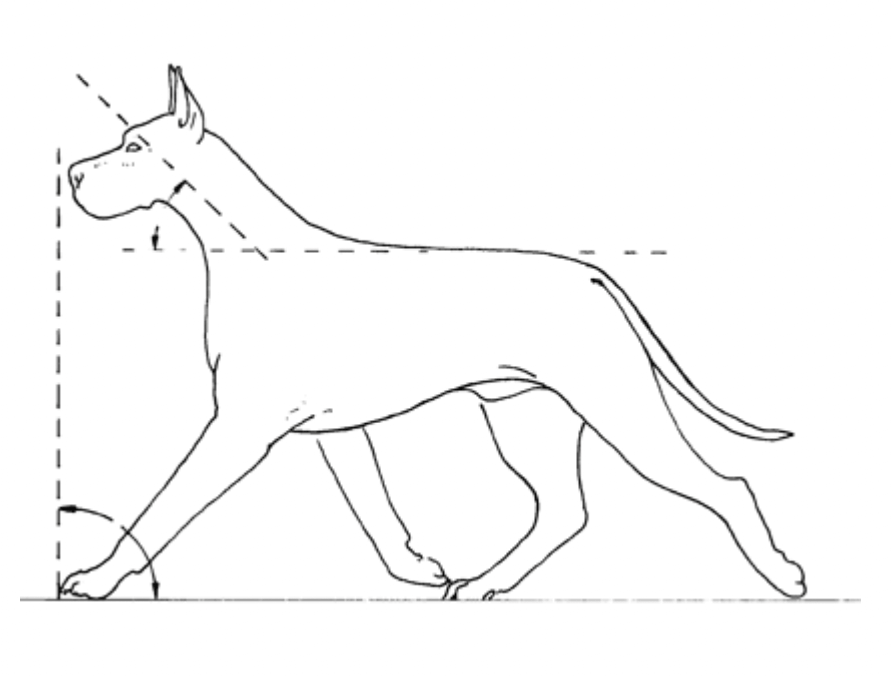
A flat chest and poor angulation are genetic problems in Great Danes that can lead to early arthritis, poor athletic abilities (sometimes seen as “laziness”), and damage to joint health.
Dogs with poor structure especially must be kept as lean, fit, and sound as possible.
Feeding a good diet and offering lots of free play and movement opportunities on soft-varied terrain benefits all Great Danes, but especially those that lack angulation and chest.
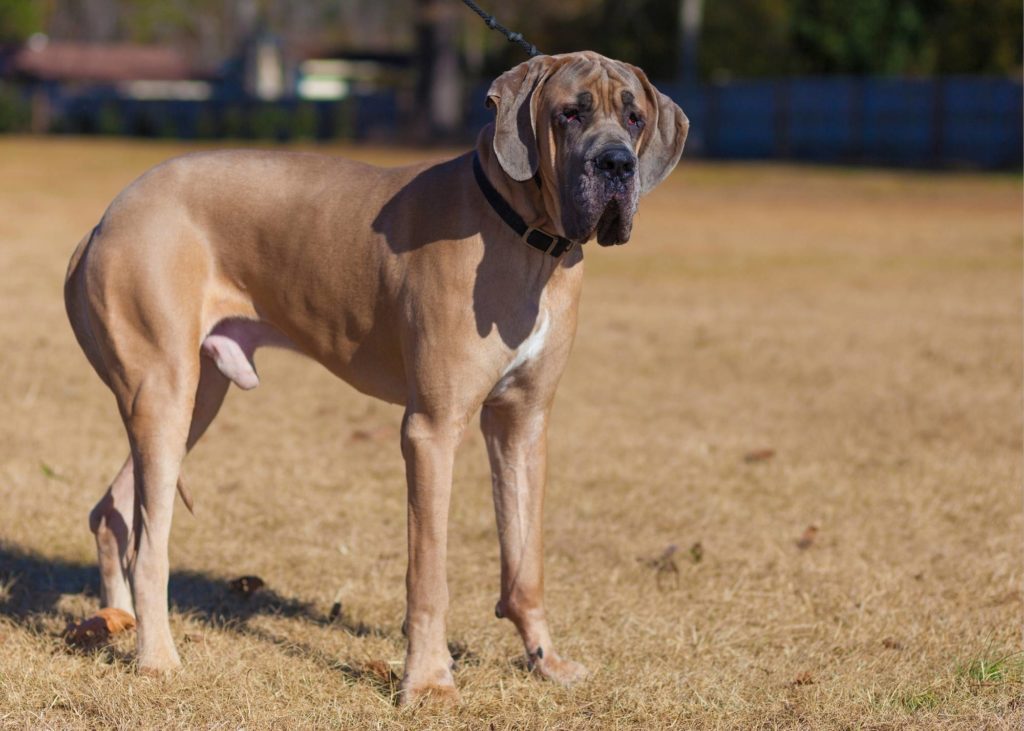
What is a Cathedral Chest in Great Danes
A cathedral chest in Great Danes is caused by the shoulders being set too far forward on the chest. This is, as above, genetic.
Keep in mind that a dog carries roughly 60% of their weight on the front end. When the shoulders and front limbs are too far forward, it completely throws off balance, weight distribution, and movement.
The heavy, large chest of a Great Dane should be supported by strong, muscular shoulders that are set correctly; when they are not, the front end suffers.
To put this into perspective, imagine carrying a somewhat heavy or large box by stretching your arms outward, instead of carrying it closer to your chest.
Dogs with a cathedral type chest may even suffer from joint damage and deformities to the feet, elbows, and pasterns as their front limbs struggle to carry their weight.
To compare, here is a drawing of ideal Great Dane structure, from the GDCA written standard. You can see how the dog is able to stand up tall, and the chest is well supported by the structure, ‘lay back’, and placement of the strong and muscular shoulder blades.
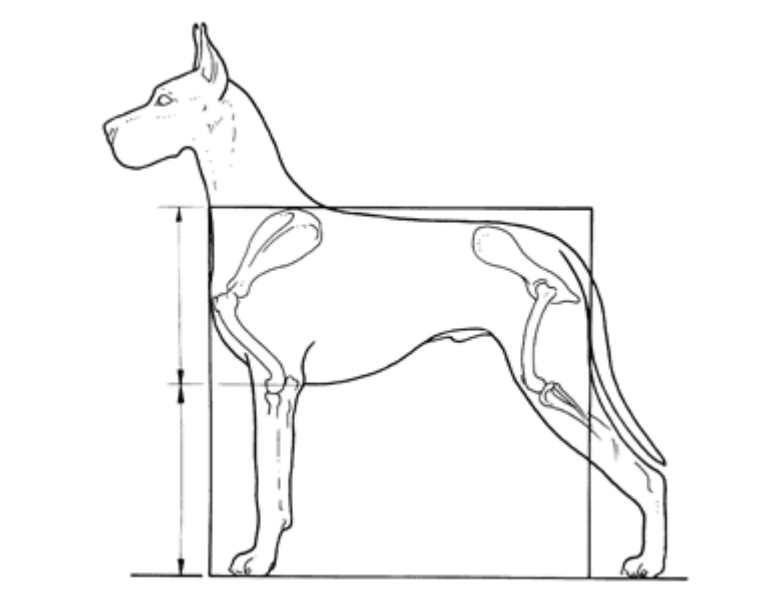
On the flip side, below is a young Great Dane dog with a flat chest, cathedral chest, and poor angulation whose feet are flat and straining to support her weight. You may also notice some bowing of the long bones in the front limbs, and that the feet are turning outward.
This is the result of genetics, made worse by poor nutrition and care.
Unfortunately, this dog is being used for breeding by a popular breeder, and as a result is perpetuating painful structural problems in every puppy that she produces.
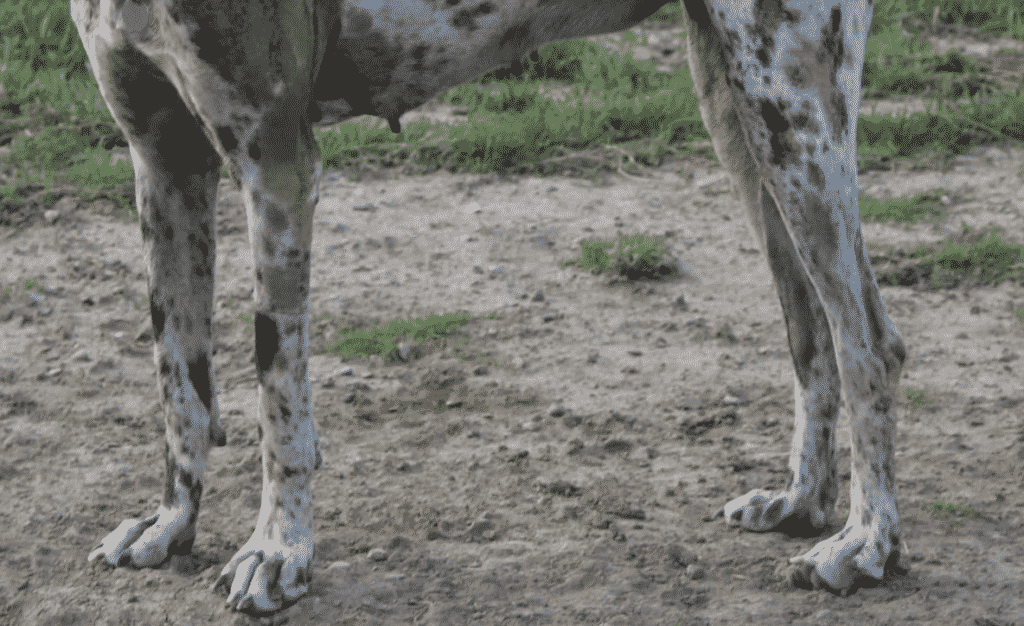
What is a Weak Chest in Great Danes?
Some Great Danes suffer from weak chest, or poor chest development and breadth of chest.
You can see this in dogs, like the one below, whose front limbs are close together.
While it can take a Great Dane 2-3 years to truly develop and mature physically, many dogs never develop and will have this lanky, narrow ribcage look for life.
This can be made permanent, or worse, by early spay and neuter. It is my belief that Great Danes need hormones to correctly mature, especially if they have unstable structure to begin with. Spay and neuter should happen no sooner than 18-24 months.
Talk to your veterinarian, and be a responsible owner when it comes to breeding or ‘accidental’ breeding of intact pet dogs.
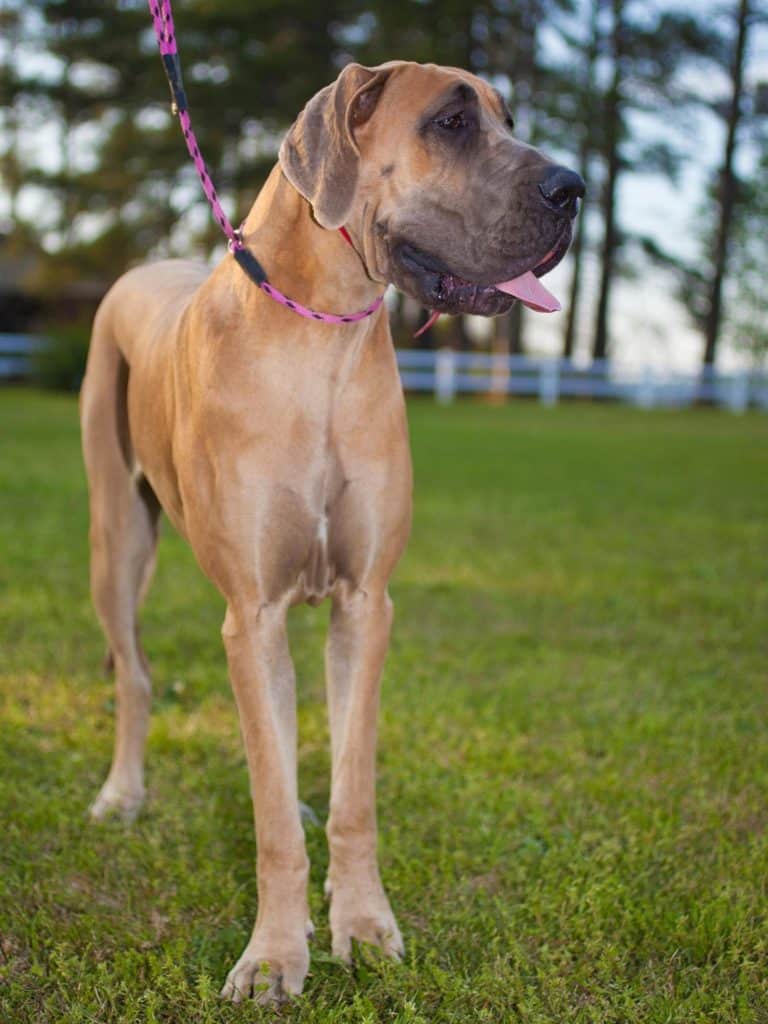
The Role of Ethical Breeding in Great Dane Health
Unfortunately, many of the issues above are extremely common in pet Great Danes. A lot of people are breeding these dogs with very little understanding of how and why to breed for correct structure.
They rarely if ever seek a 3rd party opinion of the dogs they are breeding, and thus, blindly perpetuate orthopedic instability in their pedigree.
This is not fair, nor is it ethical.
Many of these breeders are friendly, have nice websites, and claim to health test their dogs. A lot of them are exceptionally popular because they produce so many puppies each year. That doesn’t mean, however, that they are producing stable, sound, and well-built puppies.
Of course, even in a well-bred, thoughtfully-bred litter from an outstanding pedigree of proven (in show) dogs, most puppies will have some minor faults. But they will have been set up for success, longevity, and health. Those are the breeders we should all be supporting (not the careless, profit-driven ones).
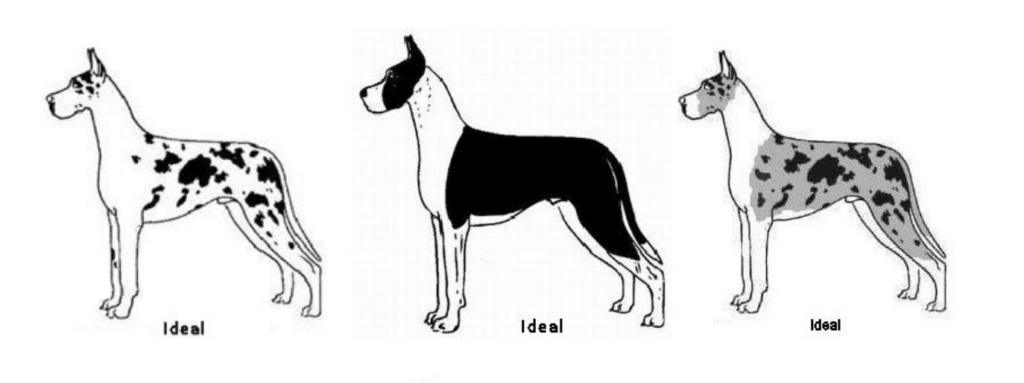
The Great Dane Written Standard
For more information about what Great Dane structure should look like, and how to find an ethical breeder, here as a little light reading for you!
Great Dane Written Standard – GDCA
Going to a Great Dane Dog Show
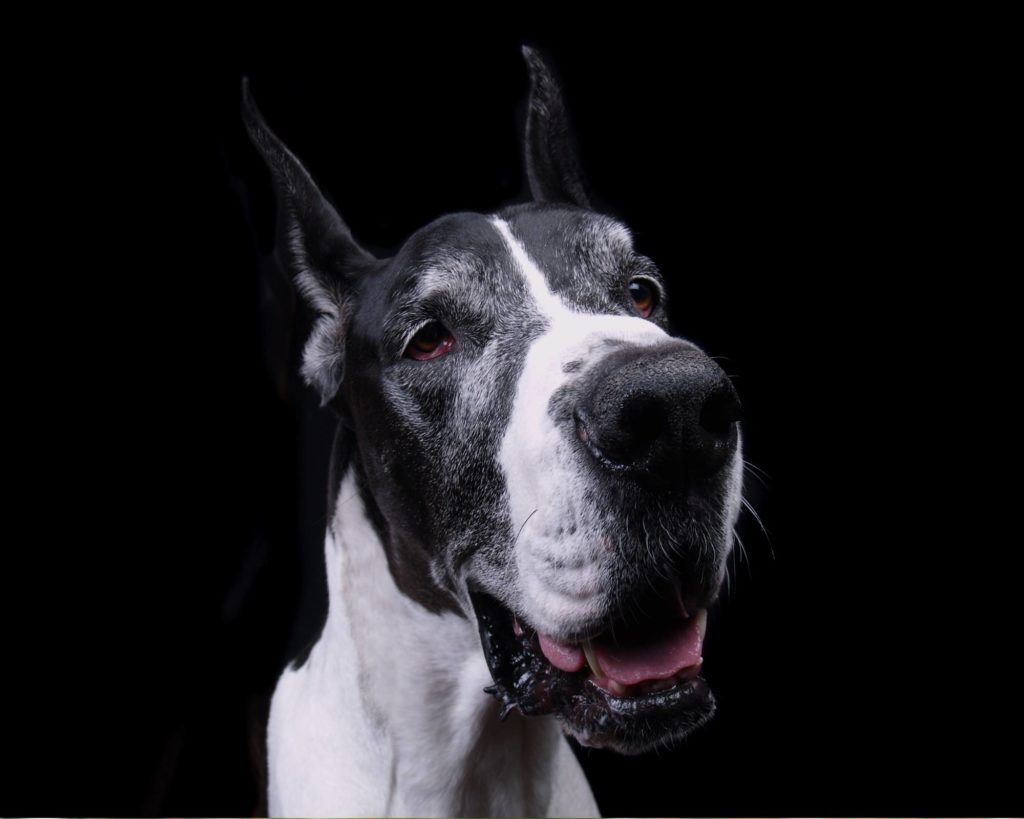
What Should I Do if my Dog Has a Flat Front or Cathedral Chest?
The good news is that there are things you can do!
- Feed a high-quality, correct diet that supports strong bones and muscle development
- Never use devices that work by restricting movement: these things include front-clip or “no-pull” harnesses, Gentle Leaders and Halti Head collars.
- Trade walks on pavement for long-leash or off-leash exploration on grass, trails, sand, and dirt
- Work with a canine physical therapist, especially if you notice pain, arthritis, stiffness, or poor movement
- Keep your dog lean
- Talk to your veterinarian, especially about joint health and responsible delayed spay/neuter practices
- Keep nails short
- Avoid slick, hard surfaces. Put rugs and runners down in your home.
- Offer an NASC sealed and/or veterinary approved joint supplement, such as Glycoflex or Dasaquin.

Leave a Reply